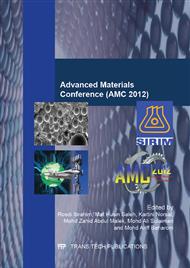p.107
p.112
p.119
p.128
p.134
p.139
p.144
p.149
p.155
Tribological Properties of 316L Stainless Steel Fabricated via Metal Injection Molding
Abstract:
The tribological properties of sintered 316L stainless steel fabricated via injection molding were investigated. Tests were carried out at room temperature comparing metal injection molded dog bone tensile samples at different sintering temperatures. The parameter used for the pin on disk test is a 10kN load, 500m sliding distance and a chromium steel ball as a sliding partner. The morphologies and compositions of the worn surfaces were analyzed by SEM, Raman and XPS. The results showed that the wear mechanism and friction coefficient of SS316L depended strongly on the microstructure which was influenced by the sintering temperature.
Info:
Periodical:
Pages:
134-138
Citation:
Online since:
January 2014
Price:
Сopyright:
© 2014 Trans Tech Publications Ltd. All Rights Reserved
Share:
Citation:


